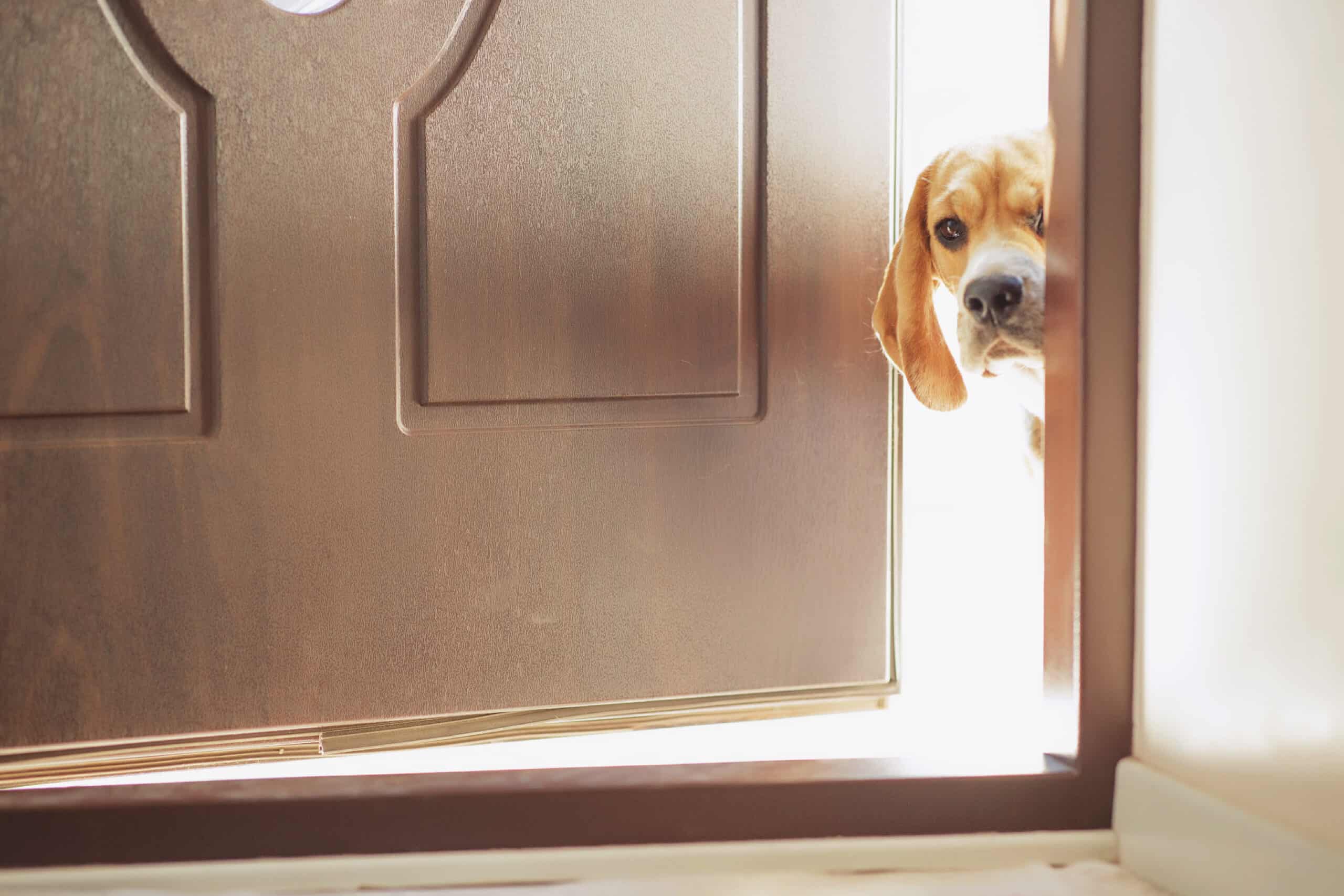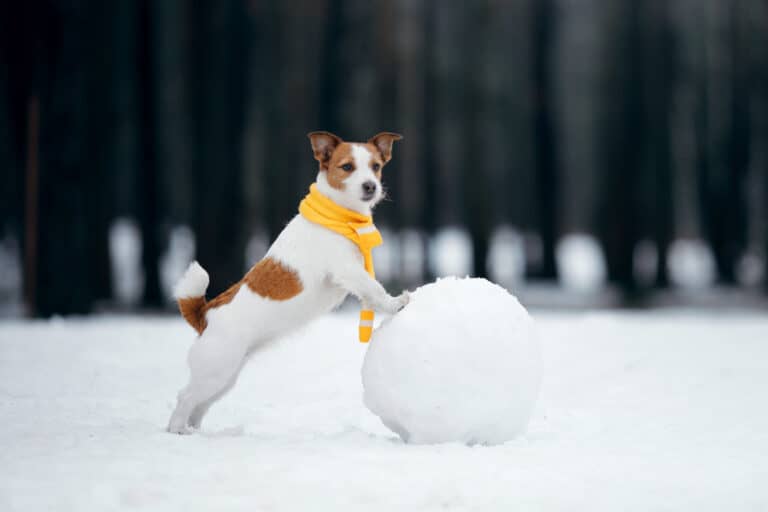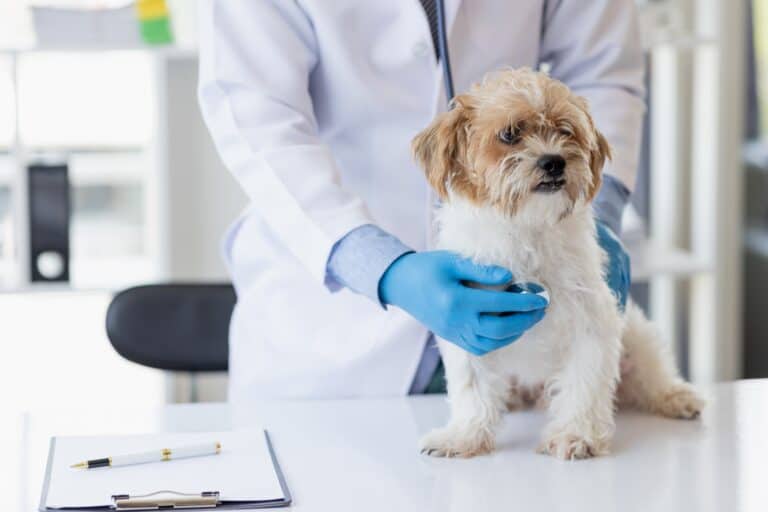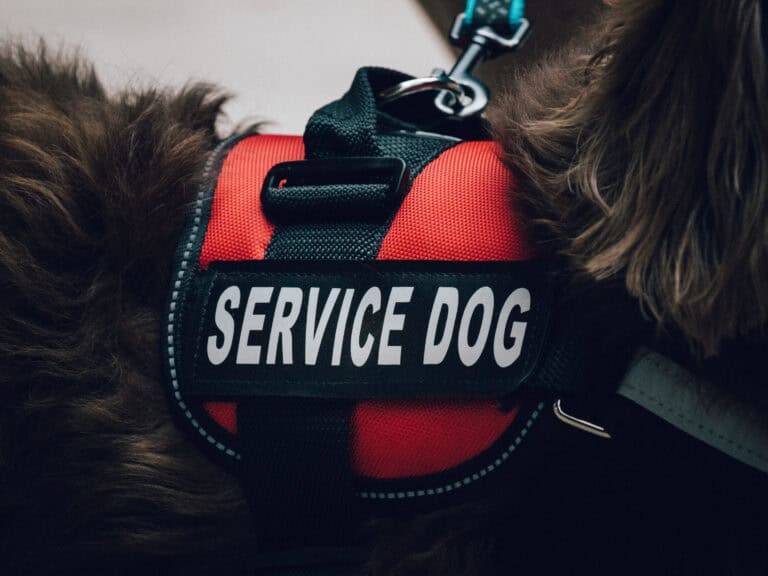When you bring a dog into your family, there are certain milestones that are familiar to those of you who have been dog owners for some time. You might recall the first time your dog was able to master some of their fundamental obedience cues, or when they mastered potty training (after seemingly endless false starts). Taking them out in public for the first time and seeing how they respond to the world around them is another memorable moment.
Another item on that list of milestones is undoubtedly seeing how your dog reacts when guests visit for the first time. You can do all the training you want in advance, but nothing quite compares to the potential anxiety you might experience when your dog encounters visitors in their own home.
This disruption to their usual routine can have a significant impact on your dog’s behavior – but, like many situations with our dogs, it can also be used as a training opportunity. Putting in the effort before your friends or family members arrive can minimize the disruption for your guests, reduce your anxiety levels, and perhaps most importantly, ensure your dog maintains desirable behaviors no matter who comes to visit. In this article, we’ll provide you with some tips on how to manage your dogs when guests drop in at your home.
1. Maintain consistent routines as much as possible
Much of our dog’s lives revolve around routines. They usually wake up at a certain time; go to bed at a certain time; eat at a certain time; go for walks at a certain time; and so on. They will also be accustomed to the schedules of their human family, and who may be at work or school throughout the week.
When guests visit your home, this is a change of routine for your dog. Their daily activities may be moved – or even removed – from their schedule. For active dogs, this can pose particular issues as it can lead to unwanted, destructive behavior arising from boredom. With this in mind, try to maintain your dog’s regular routine (such as mealtimes, physical exercise, mental stimulation, and bedtimes), even with the potential commotion of visitors.
2. Train in advance
Training in a controlled environment to build up in your dog’s learning history is critical to their success when the situation actually presents itself with additional stimulus and distractions. This involves training or socialization to things such as noises from the doorbell, knocking at the door, car doors closing, or even footsteps on a walkway or up a set of stairs or porch. You will want to practice keeping your dog calm and engaged with you in a controlled environment while exposing your dog to these and rewarding them for the behavior you want when they are presented with a guest later on.
As with any behavior, obedience training will be at the forefront. You want to ensure that you have built up enough reps in your progression that when the situation of hosting guests occurs, you are able to have your dog under control and well behaved. Commands such as sit, down, place, and stay are especially useful for this. If you have properly worked them through distance, duration, and distraction in your training plan then, along with socialization, you will have taken the steps to set them up for success.
3. Create a specific space in your home
Your dog is used to living with you and the other members of your household. If family members come over for dinner and spend several hours in your company, this can easily lead to the dog becoming overwhelmed with the change of context. While this presents an opportunity for controlled socialization, it is also stressful and can lead to unwanted behaviors.
To help mitigate this, make sure your dog has a dedicated spot in your home that is just for them, their “happy place”. This area could include their crate, their bed/cot, or even a training tool like a place table. You could also provide them with some familiar toys to keep their mind engaged while they are there. If you already have a spot like this in your home, make sure that it is accessible for your dog, this gives your dog the chance to truly relax.
4. Get them out for exercise
Getting your dog out for regular walks, or other forms of physical activity that encourages them to exert themselves, has two major benefits. Iit allows your dog to release some pent-up energy that could otherwise be directed at your visitors when they arrive in various forms of unwanted behaviors such as barking or jumping. Additionally, when your guests do enter your home, your dog is more likely to want to rest, relax and curl up on their bed to go to sleep – thus reducing the likelihood of them bothering your visitors (and vice versa). If it is a planned visit, make sure you do this just before your guest arrives.
5. Find activities for mental stimulation
Mental stimulation and enrichment activities aren’t just a great distraction for your dogs, they’re also essential to building a well-rounded, calmly behaved dog. This is important all year round, but while summer in South Dakota may make this easier, one frustrating aspect of winter for dog owners in our area is the restrictions that the weather can place on outdoor activities. Hiking in the snow can be fun, but poor conditions can turn a mundane walk into an adventure just to avoid slipping over on the ice.
It is therefore useful to have a selection of indoor activities to offer your dog some necessary mental stimulation. Consider one of the many options for your dog such as scent work, puzzle toys, hiding a treat, clicker training, or just old fashion obedience work. Some of these activities even encourage your dog to harness their natural ability to identify odor(s) using their highly-tuned olfactory system. Again, doing these prior to your guests visit will support them remaining in a calm state while your guests are present. You can also provide them a means to occupy themselves mentally while they are in their “happy place” as mentioned above.
6. Remind your guests of appropriate etiquette
Although some people may understand the appropriate way to behave around your dog, it is your responsibility to remind visitors of the rules when interacting with your dog or to prevent them from doing so if it is unwanted. It is not “rude, mean, or inappropriate” to tell someone in any circumstance that they cannot interact with your dog. This is particularly important if young children are involved.
Ensure that visitors do not engage in behavior that could irritate your dog. This will vary for each dog, some dogs are tolerant and enjoy the attention from strangers, while others will become provoked by hand movements or gestures. Know your dog and know your visitors.
7. Do not let your guests feed leftovers to your dog
There are a number of reasons why you (and your guests) shouldn’t toss scraps of food to your dog. Certain foods (onions, garlic, grapes, chocolate, etc.) are toxic for dogs and should never be provided to them. Richer foods can cause upset stomachs or be difficult for them to digest, so be mindful.
Feeding directly from the table isn’t a habit you would want to encourage, and remember to remind your guests of this fact if any of them feel inclined to do so.
In summary
As with many things in life, planning and training are essential to positive outcomes. While the first instance of guests visiting may be nervous, preparing for the occasion can greatly alleviate your own anxiety and allow you, your guests and your dog to enjoy a positive experience together. As you have more visitors to your home, your dog will become accustomed to what is expected, and visits will simply become part of the routine for a behaved dog.




